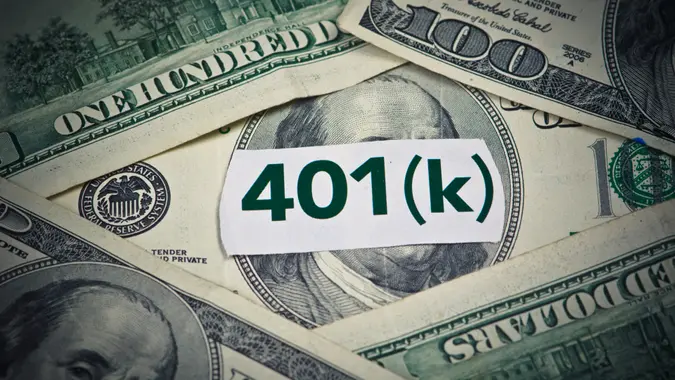How Much Do I Really Need To Save for Retirement If I’m Retiring in 2050 or Later?

Commitment to Our Readers
GOBankingRates' editorial team is committed to bringing you unbiased reviews and information. We use data-driven methodologies to evaluate financial products and services - our reviews and ratings are not influenced by advertisers. You can read more about our editorial guidelines and our products and services review methodology.

20 Years
Helping You Live Richer

Reviewed
by Experts

Trusted by
Millions of Readers
You may have heard those so-called “magic numbers” associated with retirement. For instance, perhaps you’ve read about needing $1 million in retirement savings. The numbers can vary greatly, depending on which source you use.
What if retirement is still decades away? GOBankingRates talked to some financial experts for their advice about saving for retirement in a way that makes sense now and in the future.
Crunching the Numbers
Annie Cole, Ed.D., money coach and founder of Money Essentials for Women, said a good rule of thumb is to use a 3% annual inflation rate to predict how expensive your lifestyle will be in the future. For example, if it currently costs you $60,000 to cover your annual expenses, then you can expect next year’s expenses to be $61,800. Cole said there are great online calculators that will do this math for you over decades at a time.
“Let’s say you’re 30 years old today in 2025 with $60,000 in annual expenses and you want to retire at 65,” Cole said. “In 35 years, assuming 3% inflation each year, your annual expenses will be $168,831.”
If we use the 4% rule to estimate your needed retirement funds, that means you would need to have $4,220,775 in your retirement account to never run out of funds.
“If you were to use your current annual expenses of $60,000 and divide it by 4%, you’d get $1,500,000,” Cole said. “You can start to see why it’s so important to include inflation into your retirement projections to not fall short when you reach your retirement age.”
Planning for Growth
Rob Edwards, managing director and senior PIM portfolio manager at Edwards Asset Management, said if you’re retiring in 2050 or later, your biggest risk isn’t market swings. It’s running out of money.
“Thanks to advances in medicine, technology and wellness, longevity is changing how we need to think about retirement — and how we construct long-term investment portfolios,” Edwards said. “What used to be a 20-year horizon now can stretch to 30 or 40 years. That kind of timeline calls for growth. Getting too conservative too early can slowly erode the life you’ve worked hard to build.”
 Written by
Written by  Edited by
Edited by 


























